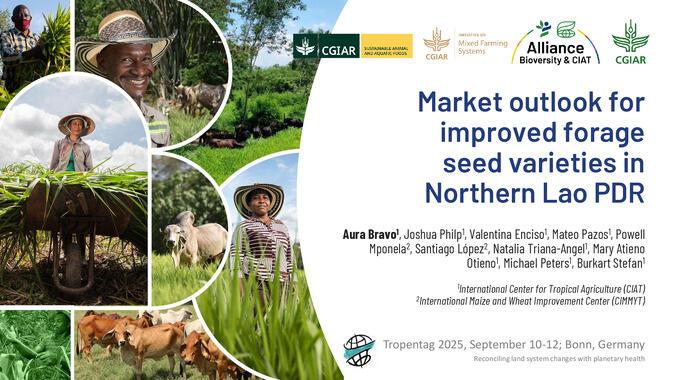
The Laotian livestock sector is transitioning from subsistence-based systems to modern, commercialised models, driven by the potential to integrate into growing regional markets. However, livestock rearing in northern Laos faces major structural challenges in cattle feeding, including low-quality and quantity feed, which limit smallholders’ ability to benefit from emerging market opportunities. To provide farmers with forage options for integrating in their productive, demonstration farms with improved forage varieties (grasses and legumes) have been conducted in three districts along Laos's north, central and south regions. While these demonstration farms have shown positive preferences among farmers, widespread adoption remains limited. In this context, understanding the forage seed market structure is crucial to fostering technology scaling. This study examines the forage seed market in northern Laos to identify opportunities for improved varieties to gain competitive market share, assess key competitors, and evaluate their influence. The findings aim to inform the strategies for governments, NGOs, and private sector actors to position forage seed varieties more efficiently, creating a favourable environment for farmers’ adoption. A qualitative, multistakeholder approach was applied using Porter's Five Forces framework, interviewing 39 stakeholders categorised as smallholder seed producers, traders, private companies, local authorities, and research institutions. Results indicate that although Laos plays an important role in the regional forage seed supply chain, particularly Ruzi (Urochloa ruziziensis) and Napier (Cenchrus purpureus) grasses, smallholder seed producers have limited pricing power due to informality and indirect competition with producers in Thailand and Cambodia. While artisanal seed production is technically feasible, the entry of improved varieties requires coordination, investment in adaptation trials, and producer training to propagate them. Thai multinationals dominate the market, with advantages in terms of scale, marketing, and distribution, which heighten entry barriers. Furthermore, despite their lower nutritional value and climate tolerance, native grasses remain dominant due to their low cost, availability, and low-input maintenance. To develop a sustainable, autonomous forage seed market for improved varieties, it is recommended to promote varieties that can be efficiently produced locally, facilitating access and strengthening distribution networks. Strategic alliances with large producers are also essential for market entry and early-stage demand creation.

